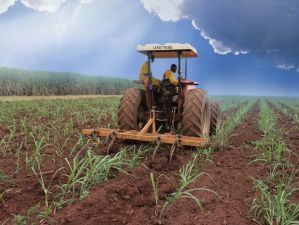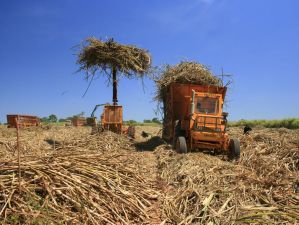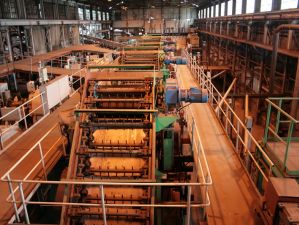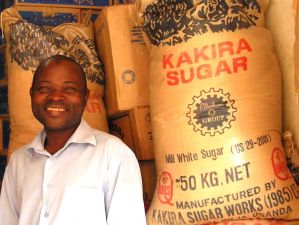     |
Kakira operates on a 4-shift system, 24 hours a day, 7 days a week - crushing fresh cane to extract the rich, golden-white sugar crystals that sweeten palates all over uganda.
Machines run non-stop from June to the following April - when the factory closes in preparation for the annual 5-6 week cleaning and maintenance break. The Process The Cane Arrives Sugar cane from the company's estate and from farmers is received at the cane yard in trailers or trucks and is off-loaded by overhead gantries, and is then fed to the mills by a cane-carrier conveyor belt or stacked for later processing. Crushing The cane sticks are first chopped into smaller pieces by cane knives. Fibre and juice are separated by milling equipment consisting of two parallel sets of five 4-roller mills driven by steam turbines. Sugar mill-turbines are traditionally driven by high-pressure steam generated in boilers fired with bagasse, the fibrous residue of the sugar cane. One set of mill-turbines has been replaced with electric motor drives in 2010 to save steam in order to generate more electricity for the national grid . Clarification The sugar-containing juice is treated with milk of lime (calcium hydroxide made from ordinary limestone) and heated using steam in specially designed juice heaters. A flocculant is added to separate soil, inorganic matter and some organic non-sugars from the juice. The settled impurities are further treated on rotary vacuum filters to extract the remaining sugar before the so-called filter cake, a valuable fertilizer, is dispatched to nearby fields. Evaporation The treated or clarified juice contains about 10% sugar, and is pumped to evaporators where it is concentrated by the evaporation of water using steam. The separated water is clean and is returned to the steam generating plant where it is converted into high-pressure steam. The resulting product is called syrup – containing about about 50% sugar. Crystallisation The syrup is pumped to the pan-floor where highly skilled tradesmen crystallise it in three distinct boiling stages to achieve maximum recovery. The quality requirement for Kakira sugar, based on international standards agreed with the UNBS, is very stringent. The main parameters are crystal size, colour and moisture. Separation of sugar crystals and molasses from the resulting mixture (massecuite) takes place in centrifugal units. The sugar crystals are then washed clean with a jet of steam. Drying & Packing The final sugar is dried in a rotary dryer with hot air and packed into 50 kg bags for bulk sales as well as a range of pack-sizes (250 gm, 500 gm, 1 kg, 2 kg and 5 kg) and single-serving sachets (6.25 gm) for retail outlets. All of Kakira's sugar carries the UNBS 'Q' Crested Crane Mark and is marketed in Uganda for local consumption. |
 |